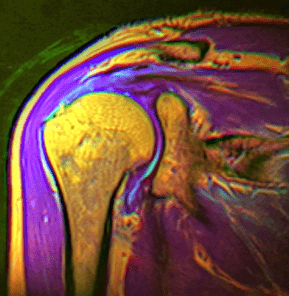IS YOUR PAIN SUPERFICIAL OR DEEP?
|
Despite the wealth and diversity of studies that have been reviewed in the current work, there is a paradoxical feeling that fascial research is still in its infancy, largely because it is not ‘mainstream’. Yet it is likely to become so in the foreseeable future if it does indeed hold the key to understanding aspects of musculoskeletal problems such as low back pain and fibromyalgia. As a substantial number of visits by patients to primary care centers relate to musculoskeletal disorders, the importance of attracting further interest in fascia from the research community is obvious. Some of the concluding remarks from Mike Benjamin’s scientific article (The Fascia of the Limbs and Back – A Review) in the January 2009 issue of the Journal of Anatomy.
|
There are three chief types of Fascia; the Superficial Fascia (actually considered to be one of the lower layers of the skin), the Deep Fascia (the fibrous connective tissue which surrounds individual muscles and divides groups of muscles into compartments — this is the one that I spend the vast majority of my time with), and the Visceral Fascia (the Fascia that surrounds the viscera or organs). It is all basically the same ‘stuff’ but is named according to where it is found. When all three layers work together, you have a tough, yet elastic tissue that, “surrounds muscles, groups of muscles, blood vessels, and nerves, binding some structures together, while permitting others to slide smoothly over each other“. As I have written about extensively (HERE & HERE) Fascia is not only one of the most important tissues in the body, but is also one of the most pain-sensitive and under-recognized as well. But back to the original question; is the source of your problem superficial or deep?
More often than not, it is not so deep that I cannot get at it. Let me give you a couple of examples. Although I certainly do not claim to be able to help every person with PIRIFORMIS SYNDROME or CHRONIC SHOULDER PAIN, a quick glance at some of our Video Testimonials (check the previous two links) will tell you that I help a significant number. With the shoulder, I can get to the deltoid muscles, the pectorals, the biceps, and at least three of the four muscles that make up the Rotator Cuff (including the Supraspinatus, which is by far the most common to have problems with). Despite the fact that I find the majority of shoulder problems are accessible to be able to treat, people perceive that the pain is deep — as in deep down in the joint itself, which is not usually the reality of the situation. With Piriformis Syndrome, I find that in many cases, the problem is not the Piriformis Muscle itself, but is in more superficial layers of tissue or Fascia. The Piriformis Muscle (at the Sciatic Notch) just happens to be the place where the impingement is occurring (HERE).
The bottom line is that while not everyone’s problem is going to be accessible with Tissue Remodeling, the majority are. Out of time today. Stay tuned for part II of this article later this month, when I will explain pain referral patterns.

